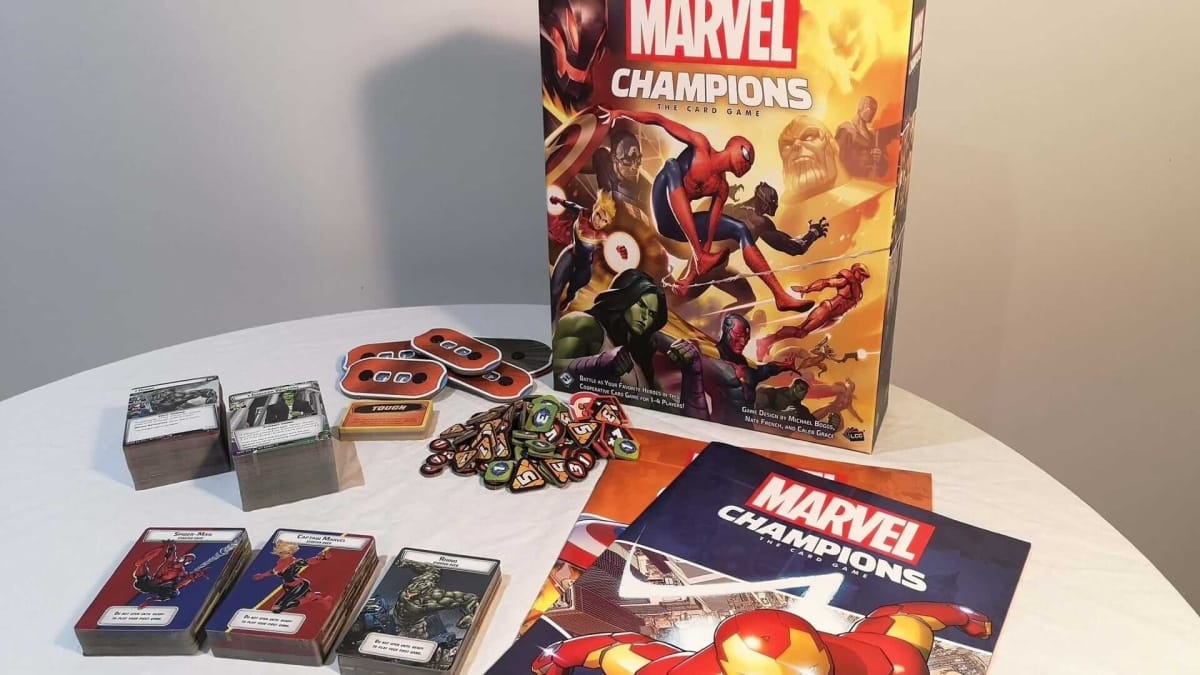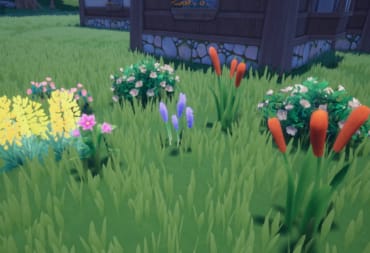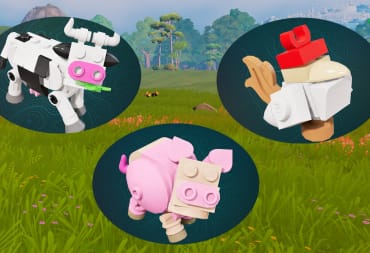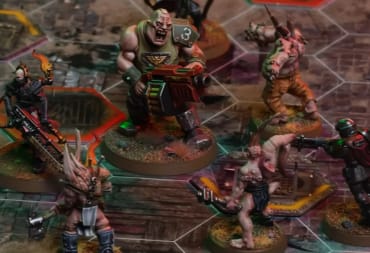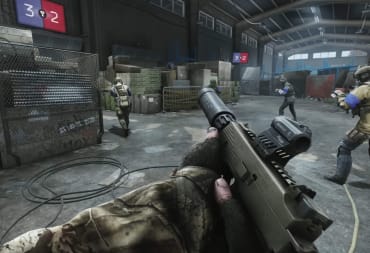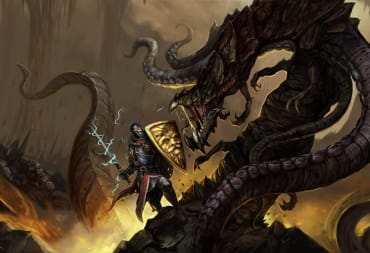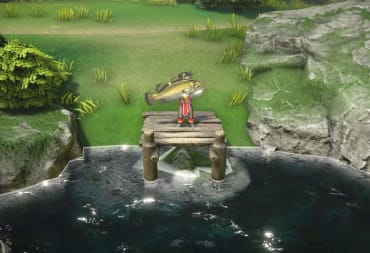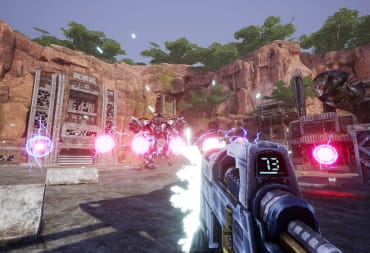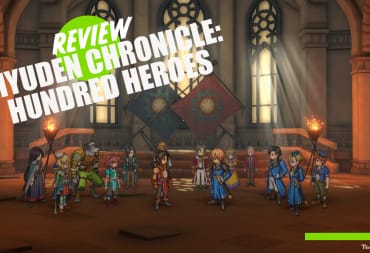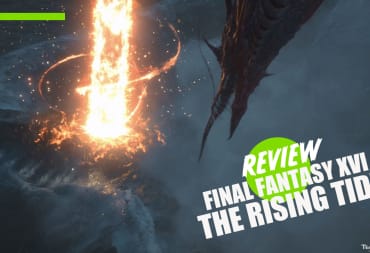Marvel Champions is a cooperative Living Card Game (LCG) from Fantasy Flight Games. In Marvel Champions, 1 to 4 players pick a character from the Marvel universe and battle against a 1 of 3 main enemies, with other villains and adversaries showing up along the way.
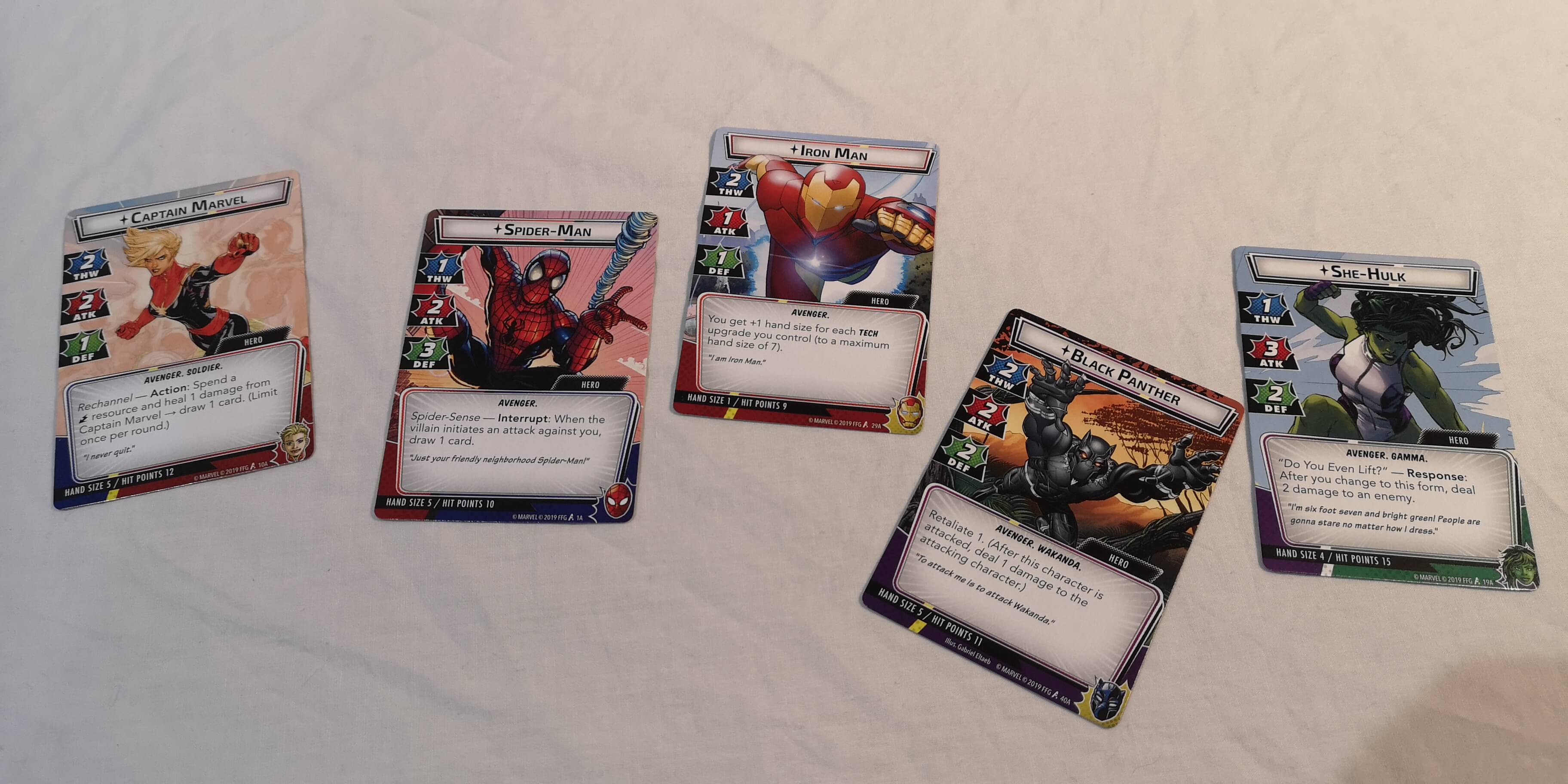
For those unaware, a Living Card Game, or LCG, is a card game that comes in fixed packs, so you know every card you will receive when you buy the pack, which is different from the randomly drawn cards in a collectible or trading card game (CCG or TCG).
The big change from the usual LCG format with Marvel Champions is that previous LCG Core Sets required you to buy multiple copies, as you would only get 1 or 2 copies of some cards that you could include up to 3 of in a deck. This left a lot of wastage in packaging and duplicate cards for those who would buy multiple copies. With Marvel Champions, the Core Set only requires 1 copy. The way deck building works means that if each player wants to play their own variation of a deck, each player may want to have their own copy, but you can play 4-players out of just the core set. We’ll look at deck building in more detail later in the article.
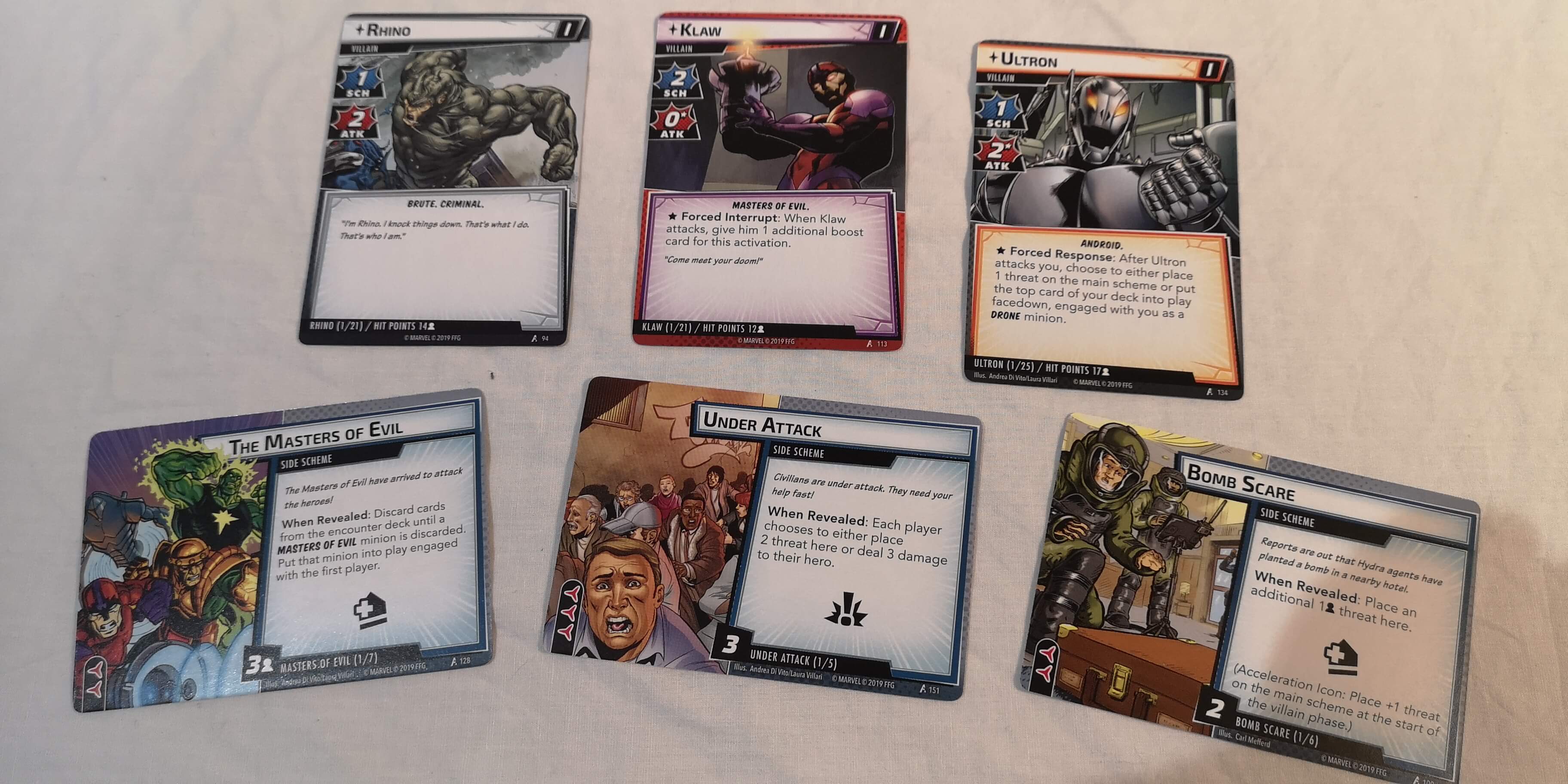
A cooperative LCG is a format that means that all players work together to achieve a goal, in Marvel Champions case, that means defeating a villain. There are 3 main villains available in the Core Set, Rhino, Klaw, and Ultron. They each have their own character card, scheme and encounter deck.
The encounter deck is made up of cards from the villain that the players are facing, along with additional basic encounter cards from the standard set, and another encounter set that range in difficulty. 3 additional encounter sets are included in Marvel Champions, Bomb Scare, Masters of Evil and Under Attack. The characters that the players are using can also have an obligation shuffled into the encounter deck. Spider-Man, for example, has the Eviction Notice card. These represent real-life distractions for the heroes, outside of their costumed life.
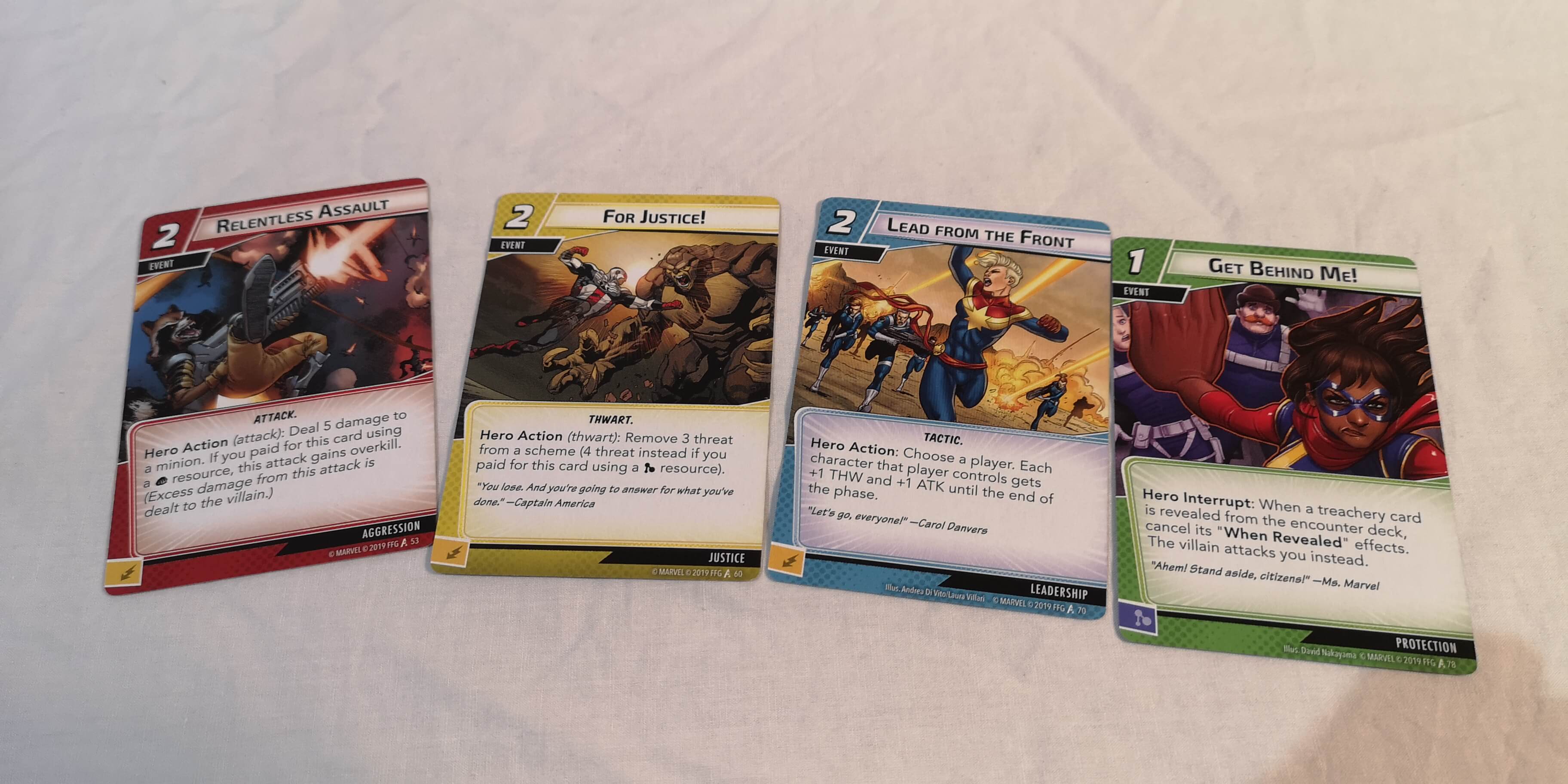
Player’s decks are made up of specific cards for their chosen character, along with basic and aspect cards to make up the total to between 40 and 50 cards. There are 4 aspects available in the Core Set, Justice, Aggression, Leadership and Protection. This allows 4 players to create decks out of the core set, but if 2 players want to use the same aspect, they will each need their own Core Set.
The core mechanics of the game see players balancing actions between damaging the main villain, which is how players win and also removing threat from the villain’s scheme and damage from themselves, which is how players lose. Heroes can switch between their alter-ego and costume mode by flipping their character card once per turn. This gives access to different actions and also controls how the villain acts during their turn.
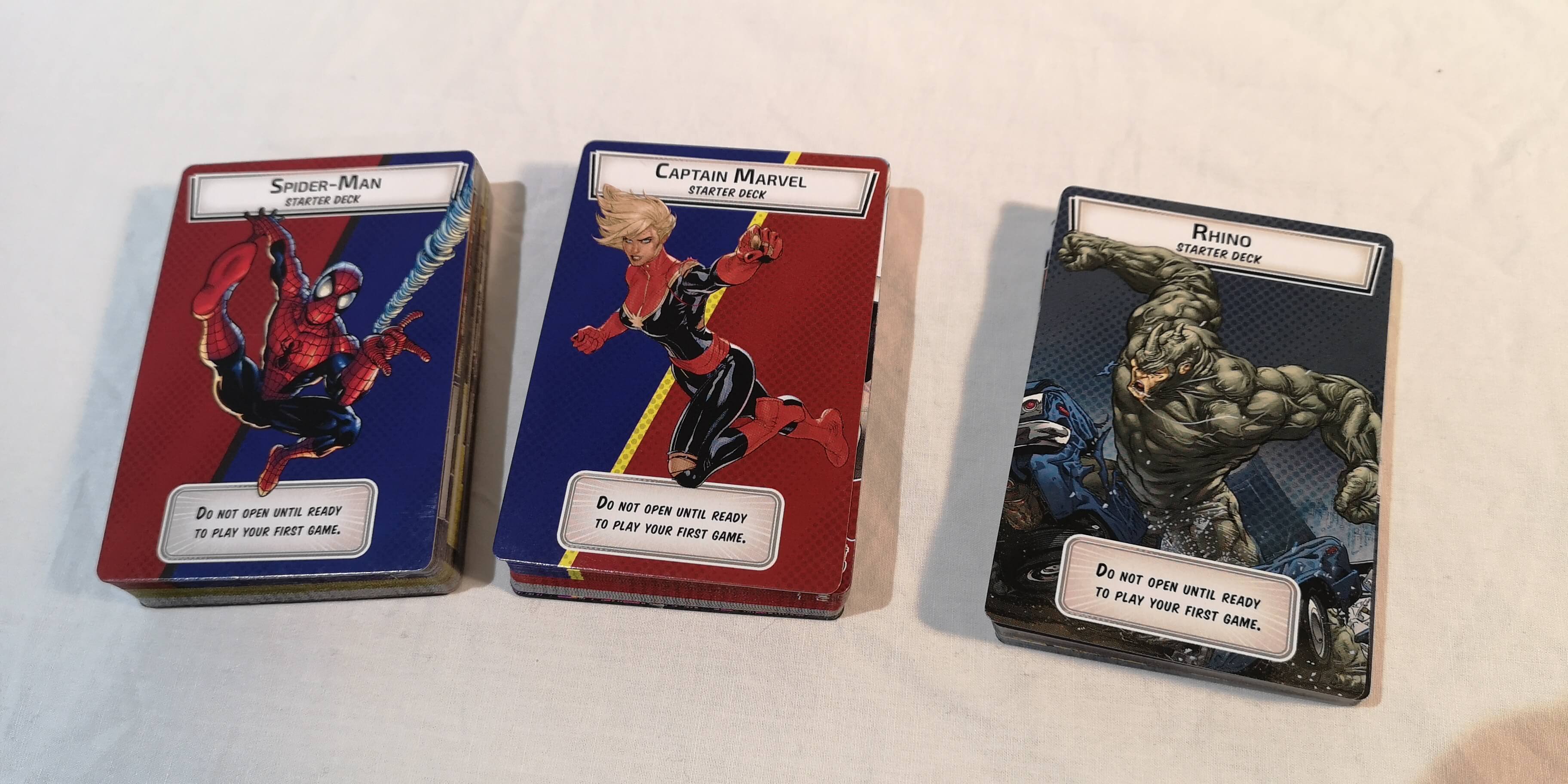
Cards in player's hand each have a cost, but can also provide a resource to play those costs by discarding them, so a choice needs to be made about which cards to play and which to discard to pay for those cards. Resources can also be generated through cards in play and hero abilities.
Player’s cards are ally’s, upgrades, supports or events, such as Black Cat who comes in to help Spider-Man or Iron Man’s Mark V Armor.
Each character does have a unique feel through their cards. Iron Man, for example, has to build up his armor in order to battle villains head-on. These can each be tweaked by changing the aspect included with their deck and even then, multiple decks can be produced.
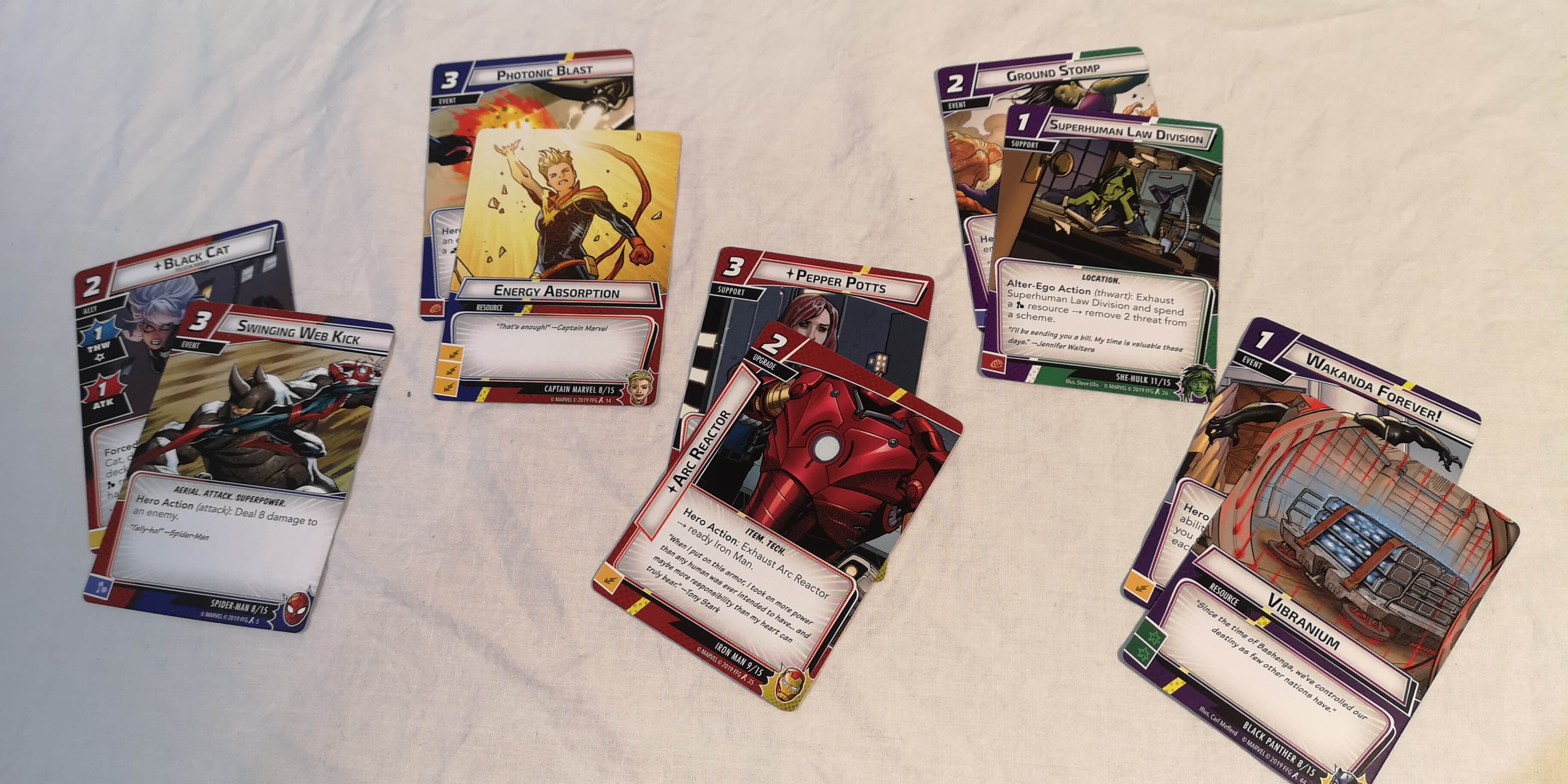
The Encounter decks for the villains also have multiple options with the different additional encounter decks available and there is also an expert mode where a tougher version of their stat cards can be used. The different deck options for both players and villains gives a lot of longevity out of the core set, but additional heroes and villain packs have already been announced and with the sheer volume of characters available out of the Marvel universe, players should never be short of a new character to try or enemy to face.
Marvel Champions is very straight-forward to play and other than building the decks requires minimal set-up. What we like most about it is that some cooperative games can lead to some quarter-backing, where a dominant or experienced player tells the others what to do on their turns, as there is usually an obvious answer to the puzzle of beating the AI enemy. In Marvel Champions, because each player has their own hand of cards, each player is unaware of the options of the other players. This encourages communication between players. If you need to take a turn out of costume, but doing so will raise the threat and put you all in a worse situation, you can check with the other players if they have a way to remove threat.
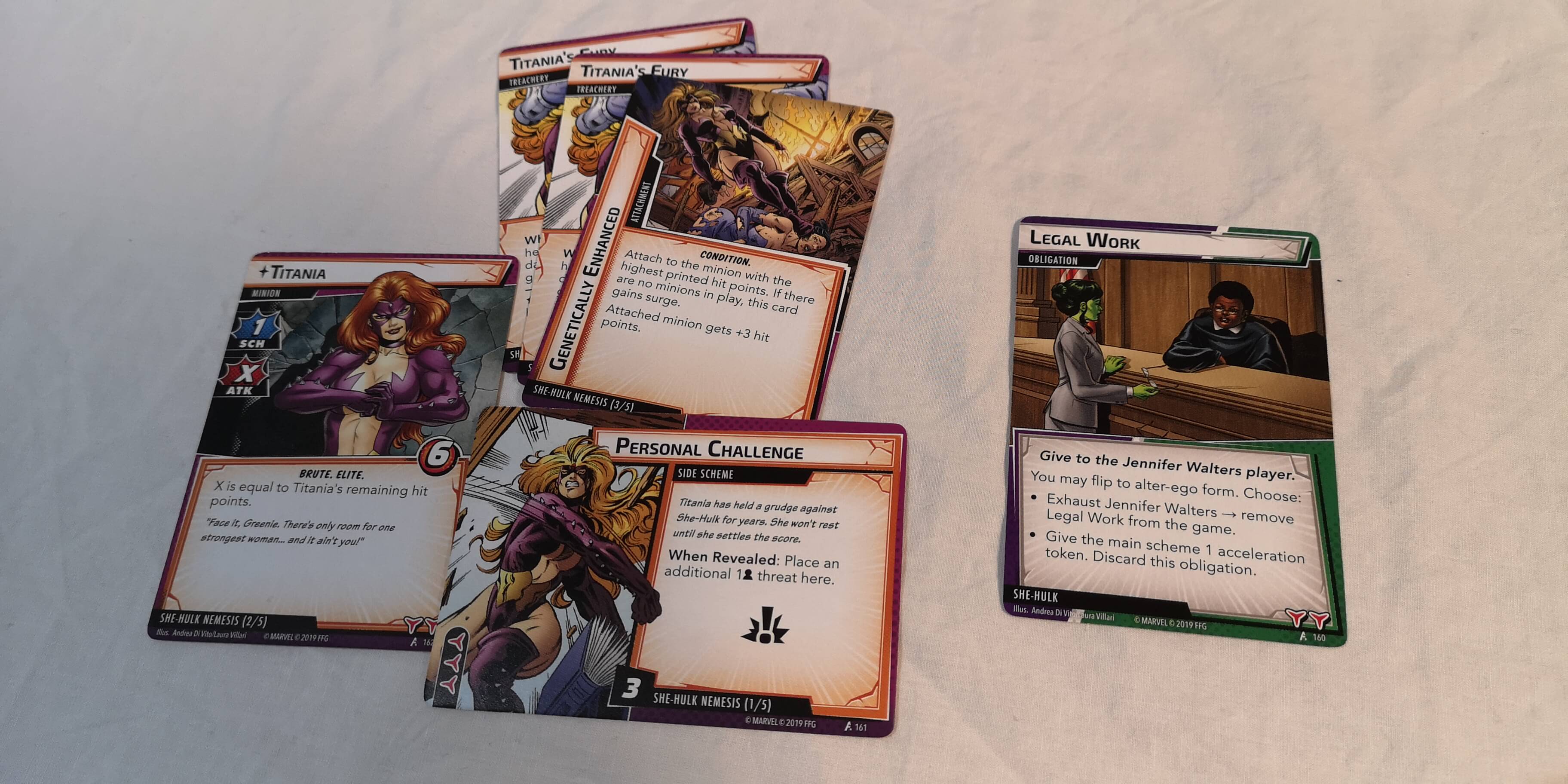
The extra villains that show up, along with allies and the obligation cards add nice touches of narrative to games, but other than defeating the main villain, there isn’t an ongoing story or legacy element to the game. The depth comes from the variety of decks you can build and enemies you can face. Games do feel like one-off adventures, and there is nothing wrong with that, but players coming from Arkham Horror or the Lord of the Rings LCGs should be aware.
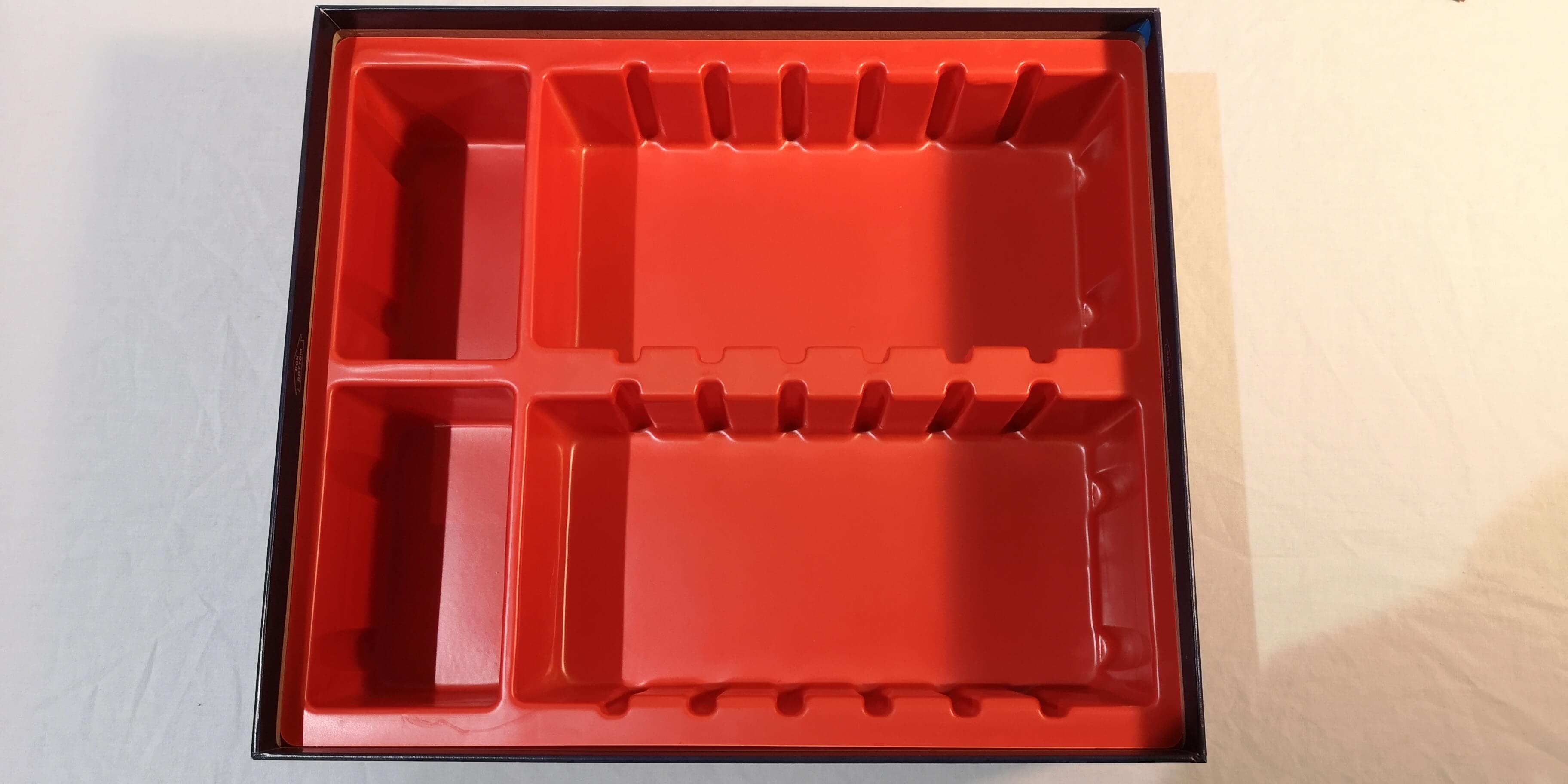
The box for the core box also comes with an insert that can carry triple the amount of cards that are included in the core set. This means that as you purchase new expansions, they can be stored easily in this box. There are spaces for dividers, but none are provided with the set. These may be released by FFG later on, but dividers can be purchased from third-party producers.
The Bottom Line:
Marvel Champions LCG is easy to learn and play, extremely thematic and has a lot of longevity and variation out of the core box. The scope for expansion is incredible and the characters all feel uniquely relevant to the characters you know and love. Those looking for a deeper legacy LCG with tons of narrative won’t find it, but the deck building variation is fun and the cooperative nature works very well.
Get this game if:
You want a Marvel Heroes card game.
You want a lot of variety and longevity out of a core set.
You want an easy to learn, simple to play and quick to set-up game.
Avoid this game if:
You want a legacy game.
You want a lot of narrative.
The copy of the Marvel Champions LCG used for this review was provided by Asmodee UK.
Review Summary
Have a tip, or want to point out something we missed? Leave a Comment or e-mail us at tips@techraptor.net
